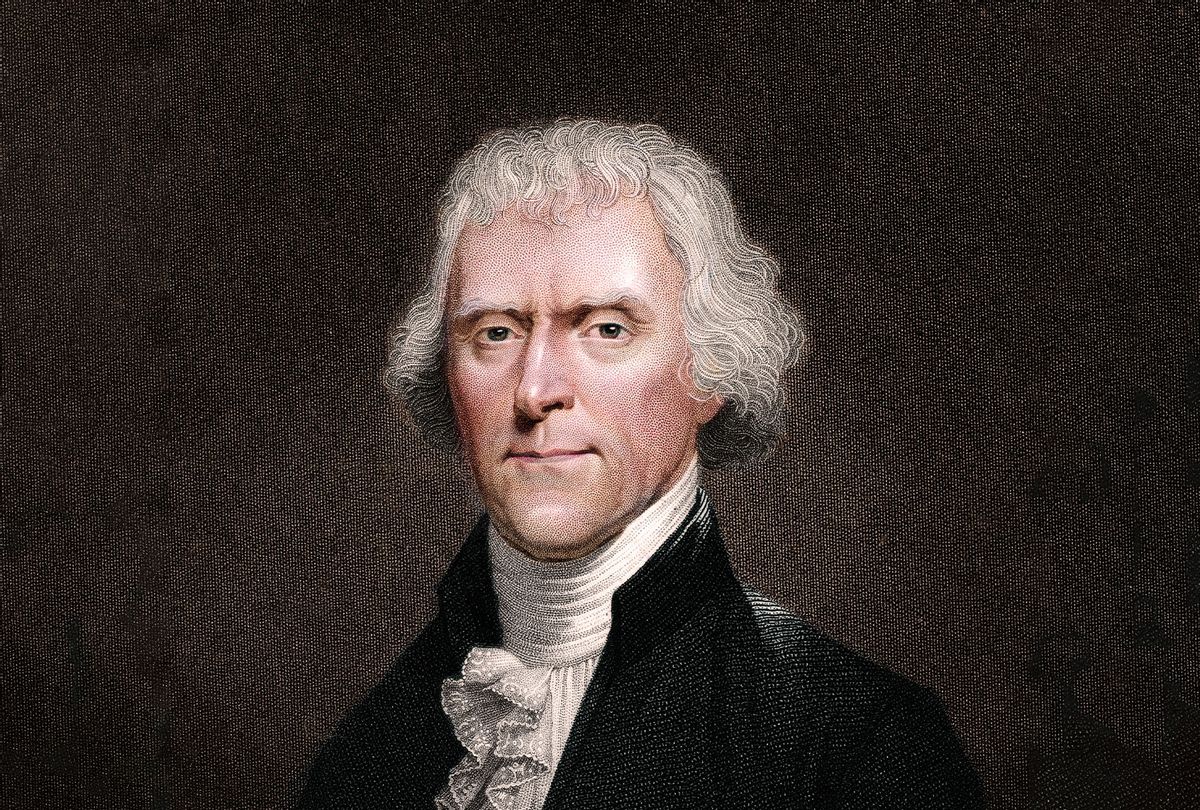The plaster statue of Thomas Jefferson that looms over the New York City Council Chamber will be removed by year's end, following a vote by a city commission Monday. The council did the right thing after a 20-year campaign by its Black, Latino and Asian Caucus. This decision is an opportunity to commission a sculpture that celebrates the Jeffersonian ideals of liberty and democracy without idolizing the slaveholder himself.
Throughout the meeting to decide the statue's fate, its defenders kept returning to a theme: The statue doesn't honor Jefferson the man, it honors his great ideas, like universal human equality, religious freedom and a democracy free of autocrats, aristocrats and theocrats. As historian Sean Wilentz pointed out in a written statement opposing removal, these ideas are still radical today and continue to inspire liberation movements, including civil rights and feminism.
One of the greatest contributions of Jefferson and his fellow Enlightenment thinkers was discrediting monarchy, the ridiculous notion that some people are chosen by God to rule because they have magic blood. Idolizing a monarch with a statue makes sense if you believe in the divine right of kings. It makes a lot less sense to build statues of leaders whom we know are flawed citizens like ourselves.
There's no rule saying that public statuary must consist of the stony likenesses of dead heroes. Lots of great art uses idealized figures and abstract motifs to educate and inspire. History has to deal with people in full. Art has no such limitations. It can abstract away the flawed figure to express the higher ideals they ultimately failed to embody.
The council members who want to relocate the statue believe passionately in liberty and democracy. They argue, persuasively, that the likeness of a slaveholder is an inappropriate symbol of those ideals.
Even the statue's most ardent champions scarcely tried to defend the man. How could they? Jefferson owned over 600 people and consigned some of his own children to slavery, children he conceived with his wife's enslaved half-sister, whom he started raping when she was just 14. The man knew slavery was wrong, but kept on owning people and selling children, despite his contemporaries, including the Marquis de Lafayette, urging him to free the people he held in bondage.
Four council members of color testified. They said they felt degraded and dispirited by the enormous plaster statue. It has grown even more imposing over the years. Its 7-foot likeness on a 5-foot pedestal casts a pall over the chamber. Its pedestal was actually raised several years ago when art restorers warned that he was vulnerable to damage. Co-chair of the Black Latino and Asian Caucus — I. Daneek Miller — testified that Jefferson's "domineering presence" feels like "psychological warfare" to legislators of color, who comprise the council' majority.
If the purpose of public art is to inspire, it matters whether it is having the desired effect on its audience. If a supposed monument to liberty is making legislators feel less-than, it has outlived its usefulness.
Pro-statue speakers said they found it ironic that a democratic government is now using the tools that Jefferson helped to create to remove his likeness. That's exactly what's happening, and that's great.
We have outgrown Jefferson's likeness, just as we've outgrown the idea that kings and white people have magic blood entitling them to rule.
Let's replace the statue of the flawed man with a statue that celebrates the brilliant and radical ideas he promoted: Democracy, equality and religious freedom. Let's talk about how we want to express them artistically in 2021. Let's install a plaque explaining to future generations why replaced Jefferson's likeness with something new.




Shares